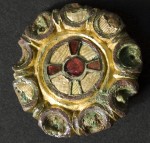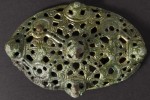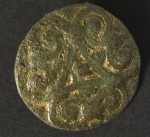THE PENNSIC WARS OF COOPERS LAKE
A campground becomes a 15000 member/medieval town for 2 weeks every year
It all began rather innocuously at a backyard party in 1966. In celebration of all things medieval, a group of medieval studies grad-students dressed up and whacked at each other with fake swords, a fight which culminated into an impromptu parade down Telegraph Avenue in Oakland, California.
From this modest party would come the "Society for Creative Anachronism" and the Pennsic War, a two week mock 'war' in which 10,000 - 15,000 knights, maidens, and other creatively anachronistic people descend on Slippery Rock, Pennsylvania, briefly turning a local campsite into the 3rd largest city in Butler County, PA.
Campers dress in medieval clothing, often camp in period pavilions, and organize huge fights with thousands of armor-clad knights armed with wooden swords and maces. The medieval themed event is so large that it has its own Mayor and post office for those particular two weeks.
The Pennsic Wars are named after a combination of Pennsylvania and Punic War. Held at the Coopers Lake Campground, the 2010 annual event will celebrate its 39th war, or in Pennsic War numbers, XXXIX.
The 'war' is held between two groups of the Society for Creative Anachronism, the Kingdom of the East and the Middle Kingdom. The challenge for the Pennsic war was begun when King Irial and Queen Morna, the elect royals of the Middle Kingdom, delivered an arrow of war to King Rakkuri and Queen Maureen of the East. It was originally held to decide ownership over the Debatable Lands (also known as Pittsburgh). However since the area formed their own Kingdom of Aethelmearc it has become more of "an earnest desire to have fun and engage in chivalric combat of the highest.” Compared to other similar SCA events, some people claim this is "The Super Bowl of Medieval Combat." with participants coming from all the world.
In addition to combat, festival participants can enroll in many courses at Pennsic University. The courses are led by medieval cultural scholars, and topics range from fashion (embroidery, Indian draping, tin hat-making), cooking (Ottoman cuisine, Anglo-Saxon foods, fire pit breadbaking), to general lifestyle workshops (flirtacious dancing, juggling, improv). Hundreds of merchants also showcase their works on the campground, making Pennsic's shopping centers some of the "best in the Known
























